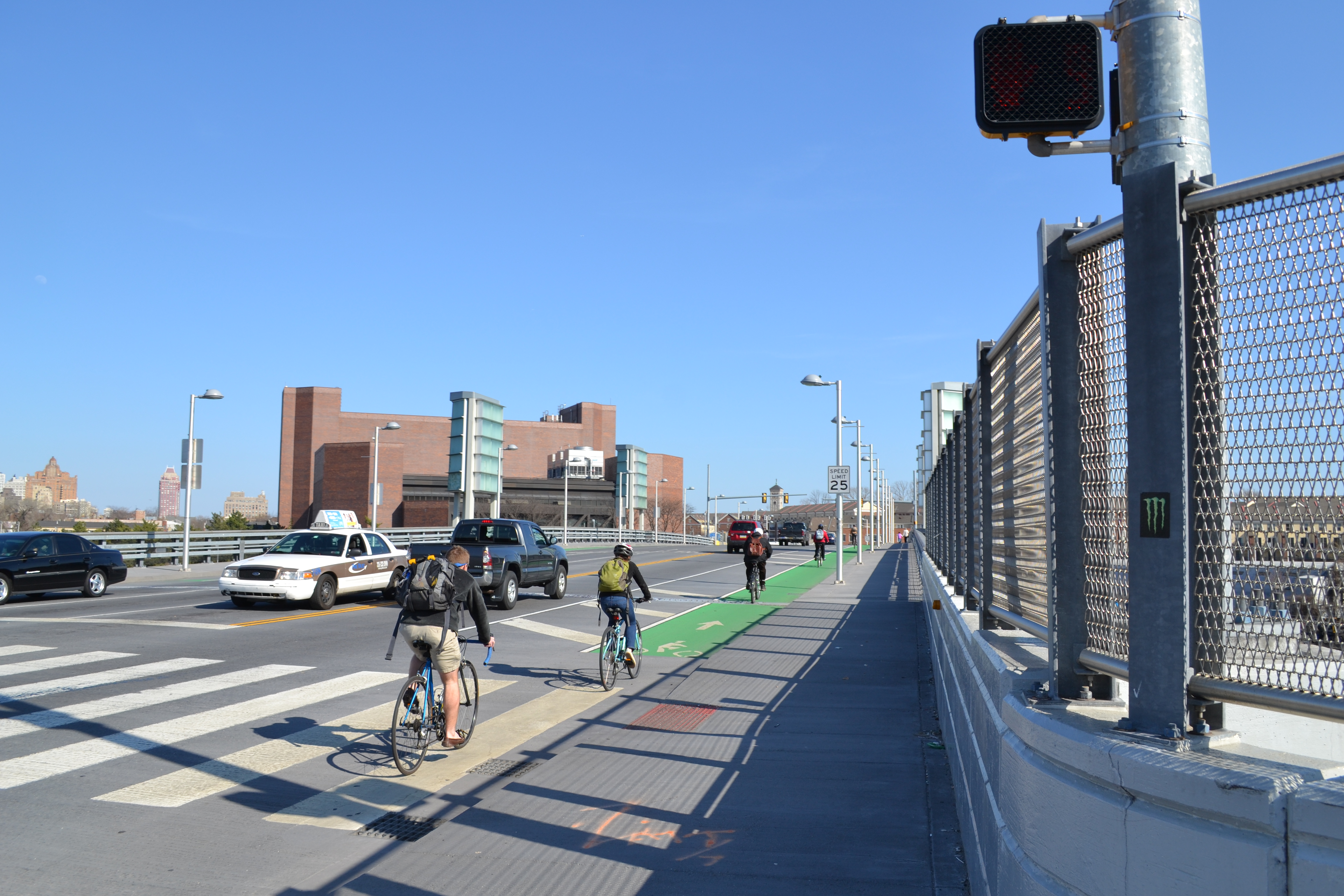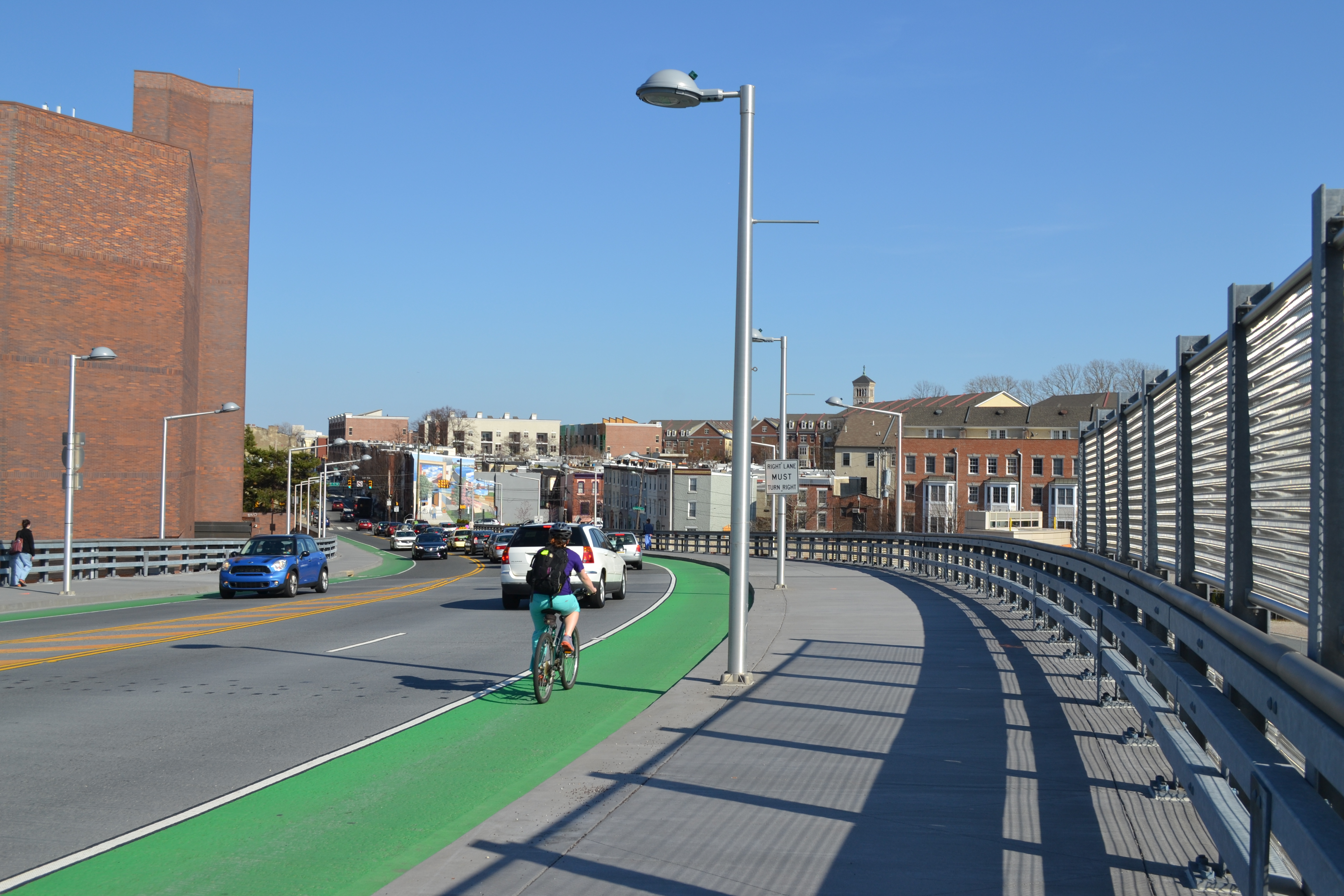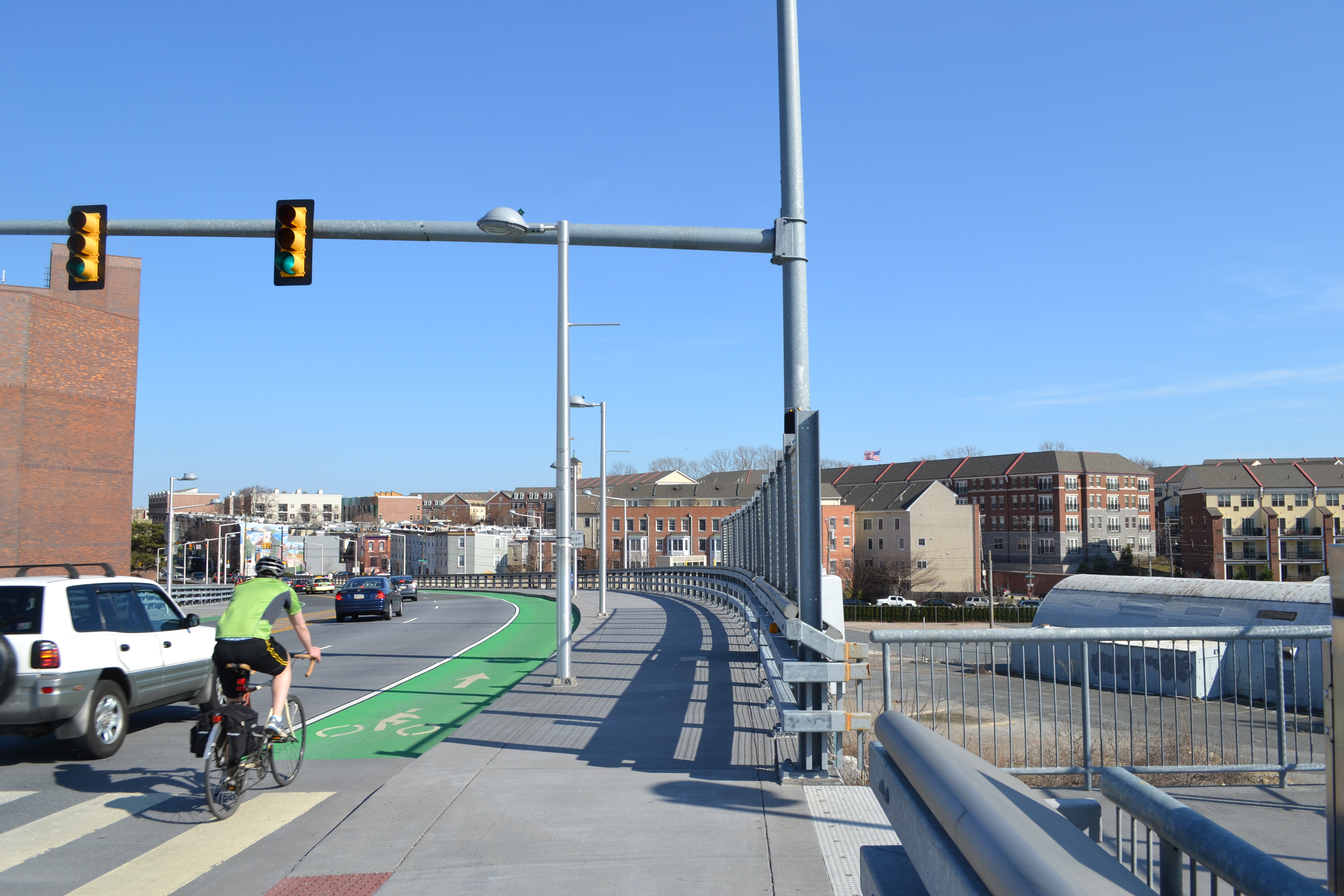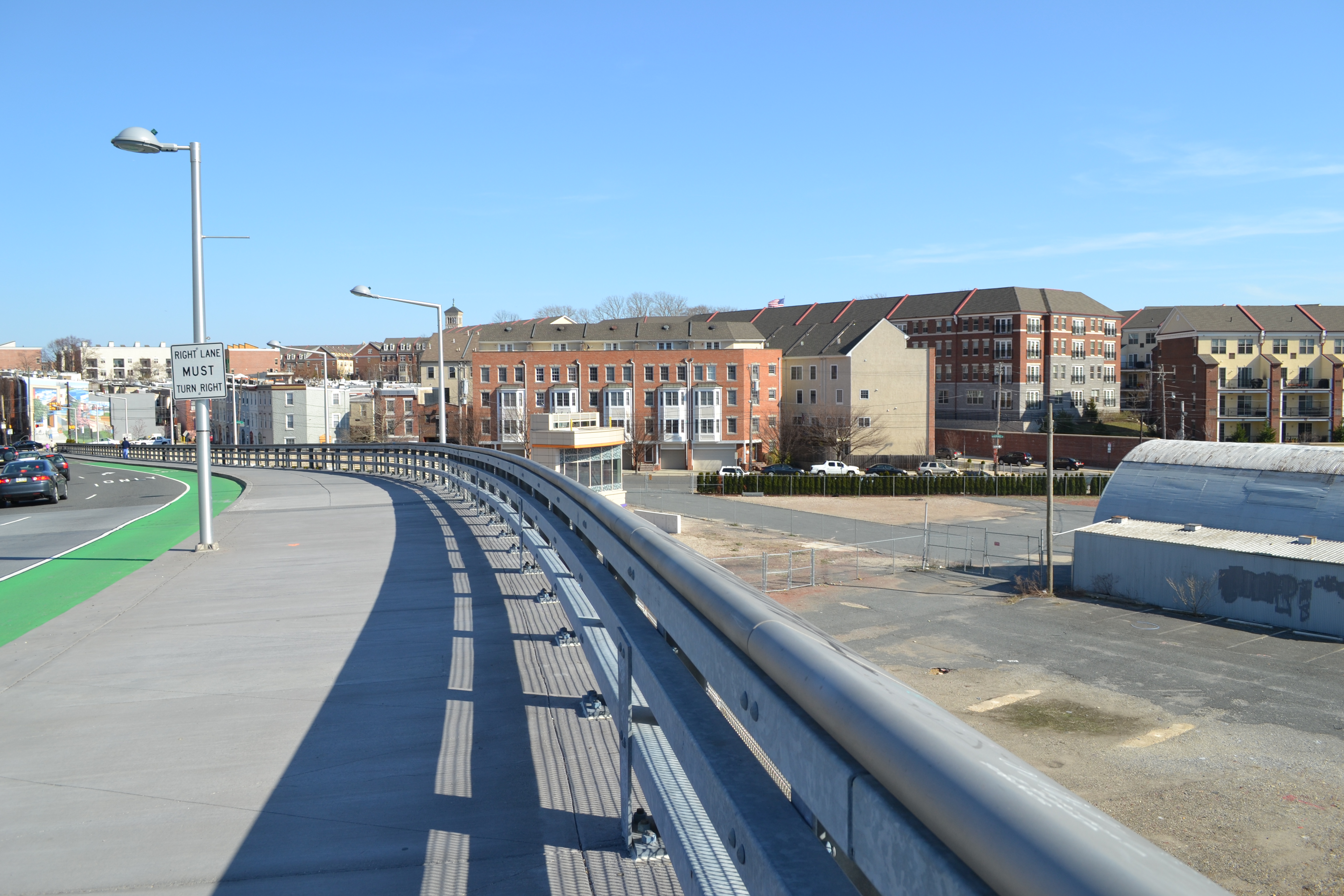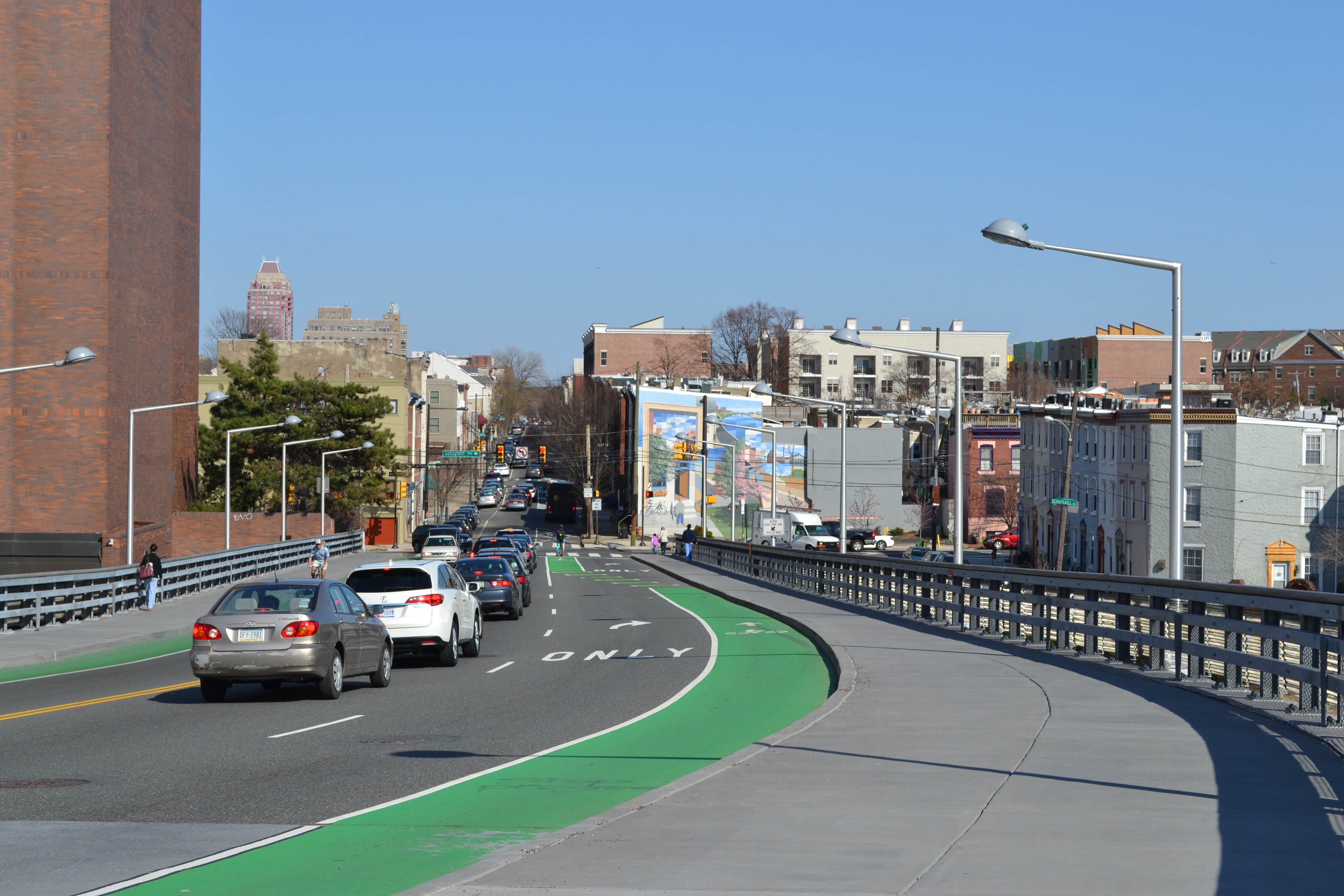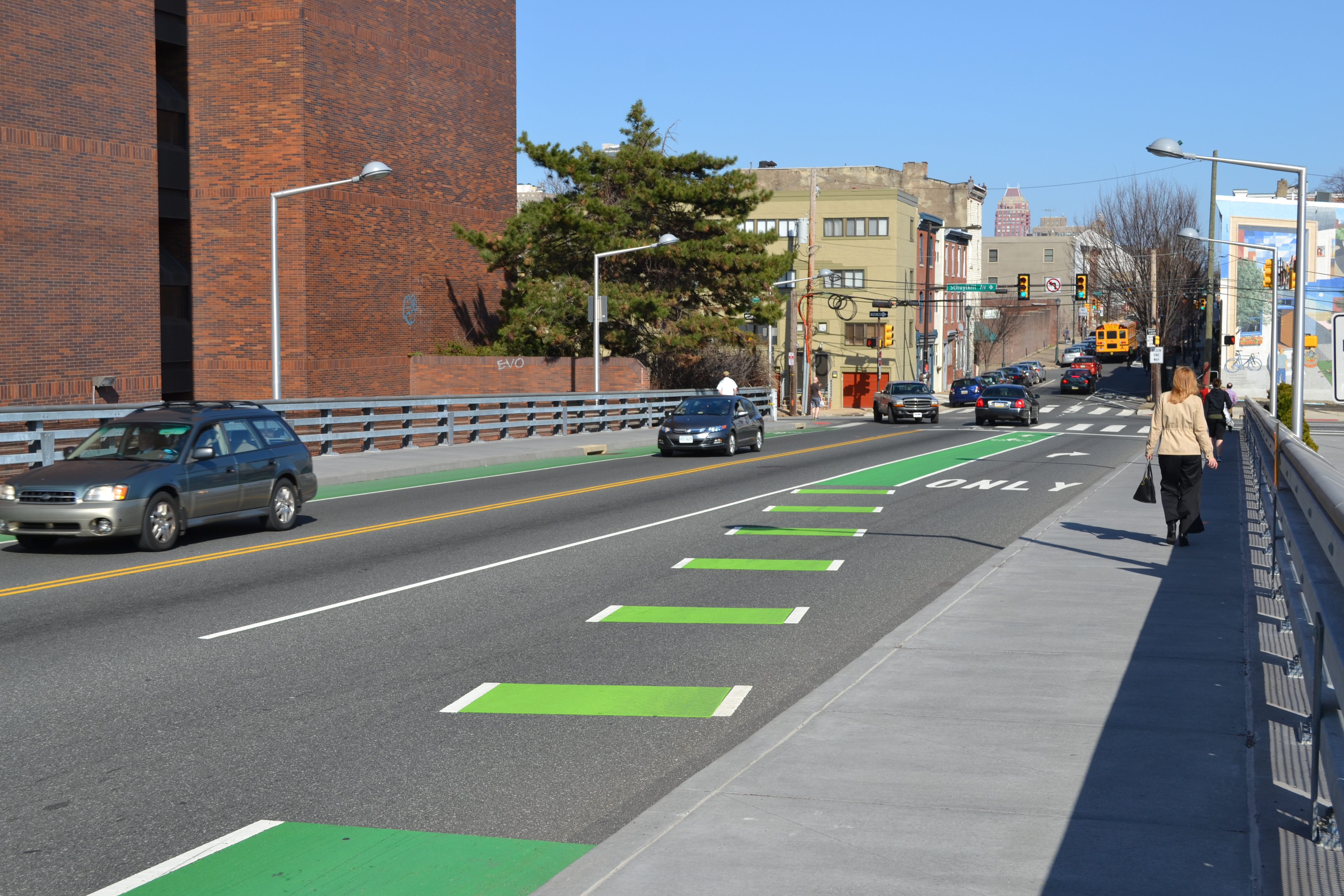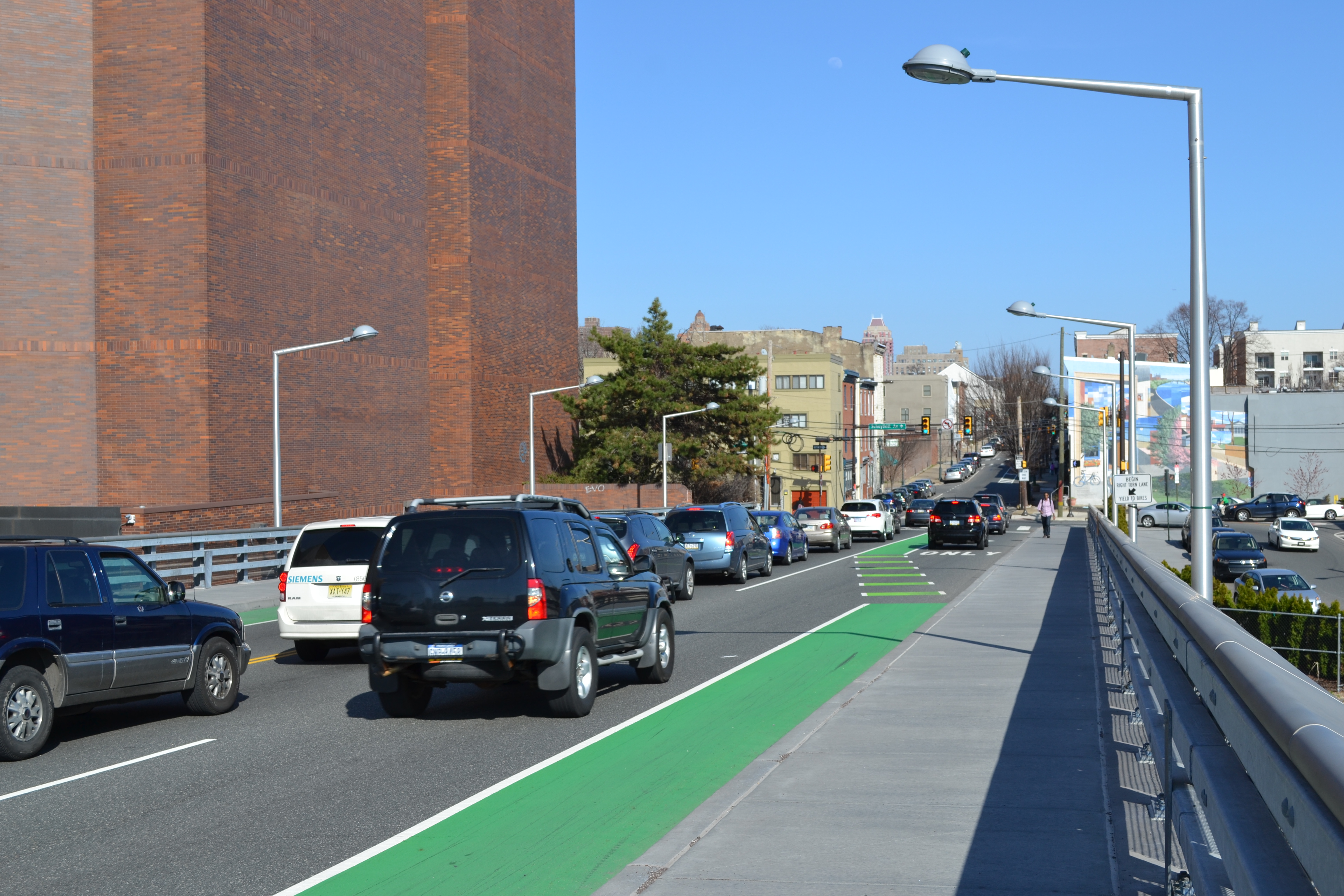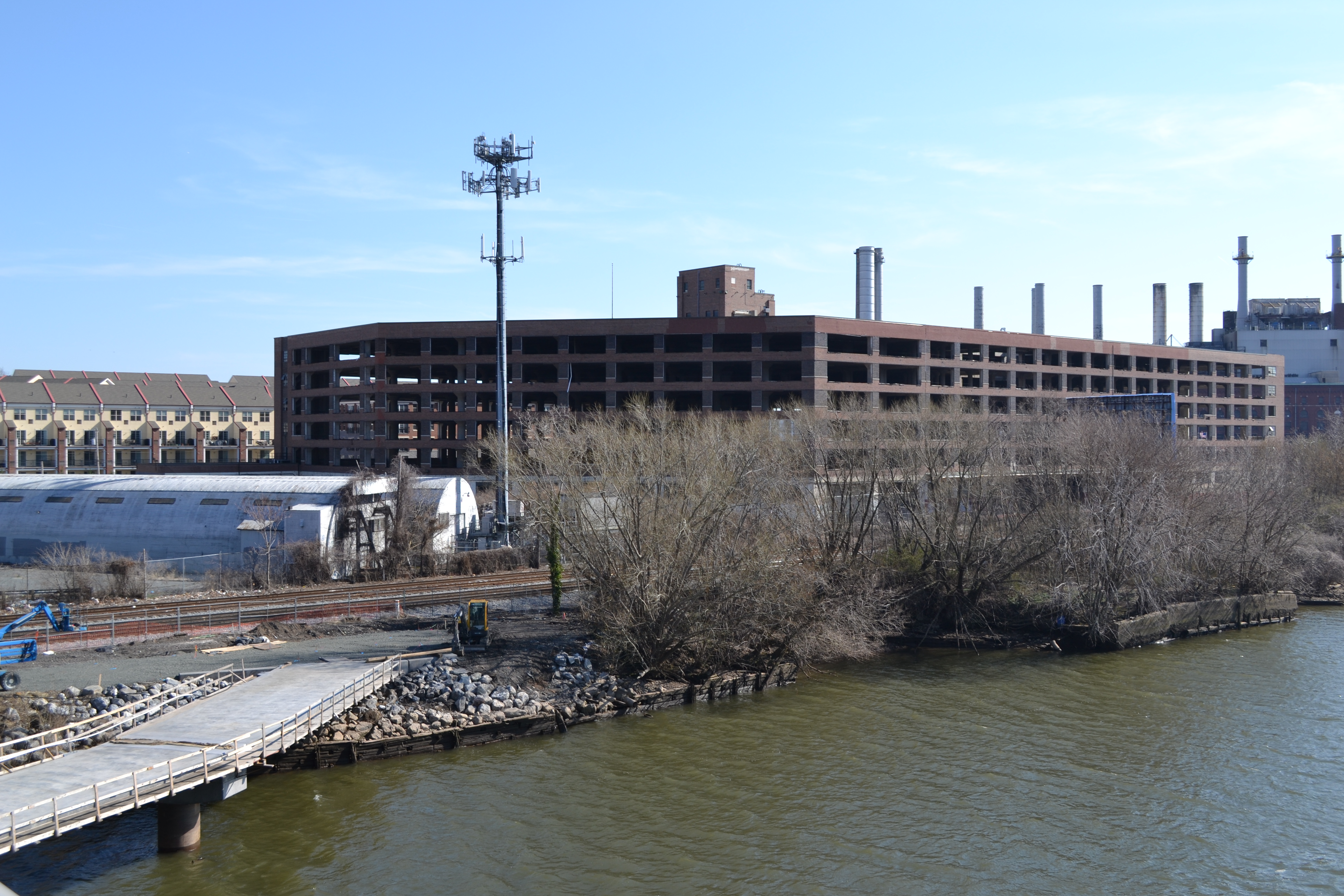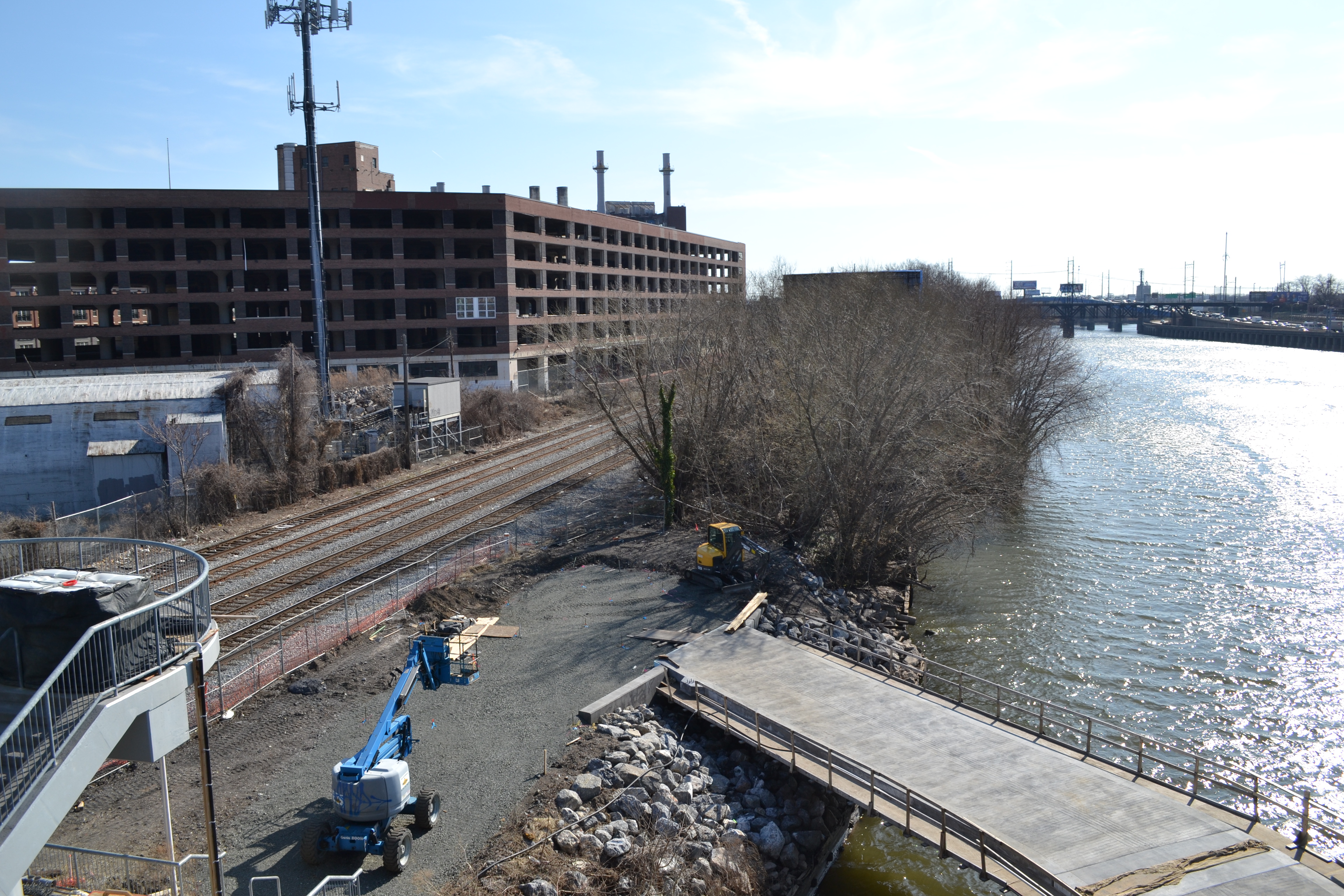CHOP plans could impact South Street Bridge bike lanes
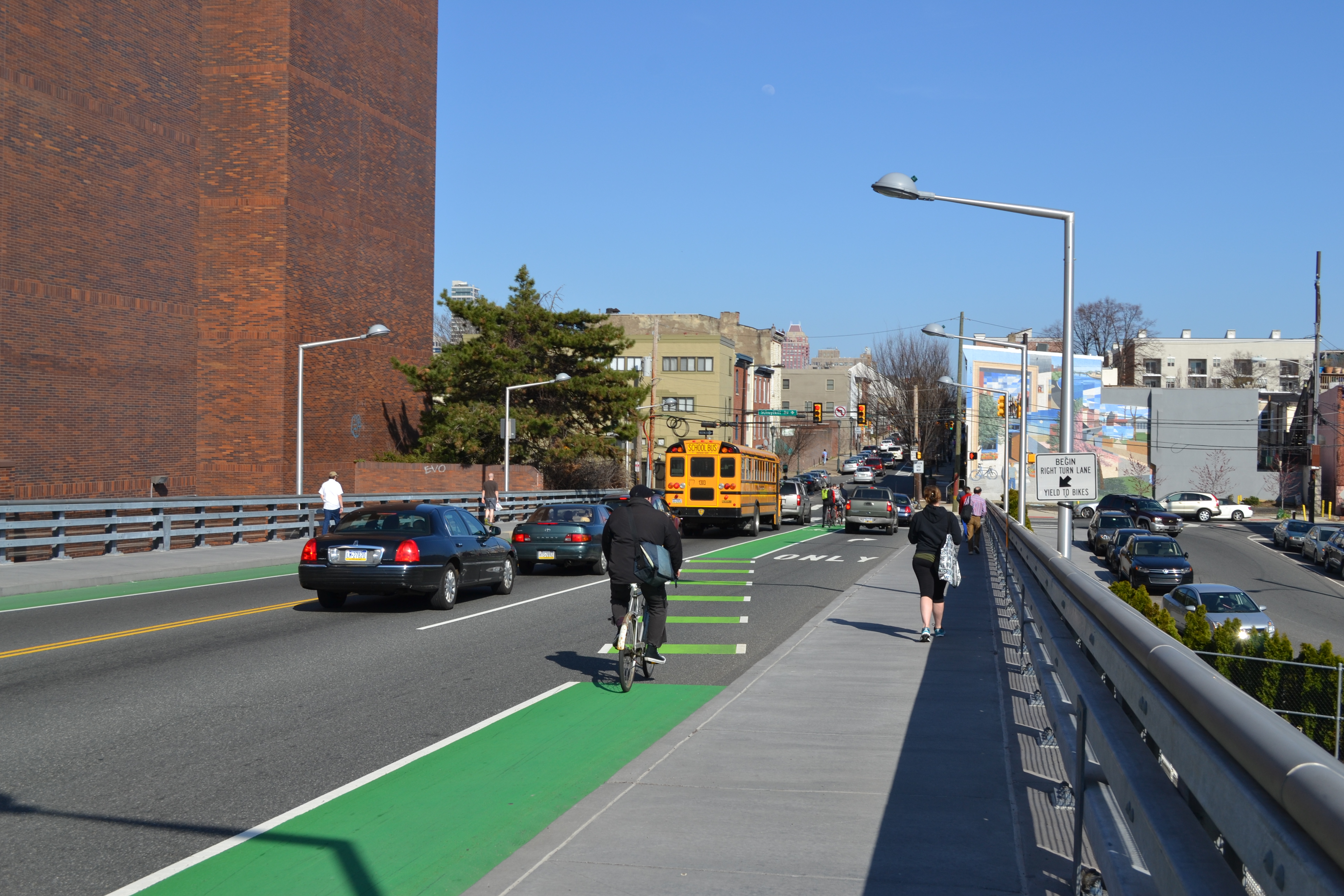
The Children’s Hospital of Philadelphia’s plans to develop a research and office campus at 700 Schuylkill Ave. could have a big impact on the South Street Bridge bike lanes.
CHOP’s plans call for two driveways that would break off from the South Street Bridge and enter the site, but as they stand now, the plans would require turning drivers to cut across the existing bike lanes. To reduce the risks of potential conflicts, the Bicycle Coalition of Greater Philadelphia is advocating for repositioning the bike lanes and adding flexible bollards to guide drivers.
“We are interested in solving the problem of how it is that we can make the bicycle-motor vehicle interaction at those driveways safe, and we think that can be done,” said Alex Doty, Bicycle Coalition of Greater Philadelphia executive director.
As the bike lane travels east across the South Street Bridge it crests the bridge and begins to descend toward 27th Street. Mid-way down the slope, the lane shifts so that bicycles are between a vehicle-through lane and a right hand turn lane onto Schuylkill Avenue. The CHOP driveways would be cut into the bridge before that lane shift. To remedy the potential driveway-bike lane conflicts, the Bicycle Coalition has suggested that the bike lane be shifted to a center position closer to the crest of the bridge.
This repositioning would, ideally, protect bicycles traveling east on the bridge from vehicles turning right into the CHOP driveways. To ensure that drivers enter the turn lane at its start, rather than continuing in the through lane until their respective turns and then cutting across the path of the central bike lane, the Bicycle Coalition hopes the City and project leaders will consider installing flexible bollards.
“This is the idea that we’ve come up with as a starting point for conversation,” Doty said. “There are a number of different ideas that are out there, and we haven’t sat down with the traffic engineers.”
The Bicycle Coalition is optimistic that the potential conflicts can be mitigated.
“What we really want is a commitment to a process that the Streets Department or the City, CHOP, and the Bike Coalition can work together on,” Doty said. “… Our experience with the folks with the Streets Department is if we sit down and all decide we’re going to find a way to solve this problem then we come out with solutions.”
The importance of managing potential bicycle-vehicle conflicts is especially evident around the evening rush hour when an exodus of cyclists seems to leave West Philly via the South Street Bridge. Multimodal traffic is high throughout the day though. The South Street Bridge is the most bicycled bridge in the state of Pennsylvania.
“Vehicular movement is a big issue for everybody – for the community and CHOP as well,” said Donald Clinton of Cooper Robertson & Partners, the firm that worked with CHOP on the site’s original master plan.
Clinton told the Philadelphia City Planning Commission’s Civic Design Review committee that approximately half of the people that will work at the new CHOP site are expected to come by car, and a large portion of those drivers will use the Schuylkill Expressway.
“One of our goals early on was to avoid those people being drawn into the neighborhood,” Clinton said. The South Street Bridge entrances are seen as a way to minimize neighborhood traffic.
“We believe CHOP is very motivated to create a safe space on streets for biking and walking,” Doty said. “This is part of their mission as a healthcare organization, so these are not objections where we’re saying this project shouldn’t be built.”
CHOP is working to reduce overall traffic to the site by encouraging transit, cycling and walking.
“We’re trying to discourage car use as much as we can,” Clinton said.
Connecting to the Schuylkill River Trail
Another “very important aspect of the plan is our ambition to connect across the rail to the river,” Clinton said.
Part of 700 Schuylkill Ave’s complexity is that it has CSX railroad tracks and river frontage on site. CHOP owns the entire property but has granted easements to CSX to use the land beneath the train tracks and to the Schuylkill River Development Corporation (SRDC) to extend the Schuylkill River Trail.
CHOP intends to build and foster a public realm around the new buildings, and one element of that will be connecting pedestrian plazas to the Schuylkill River Trail. To do so, CHOP will have to install a bridge to cross the active CSX tracks, and a “budget permitting” note in the initial plans has some concerned.
“The reason we put budget permitting in there is because, as many of us know, the healthcare industry is ever changing, so if we were to ever get to the point where we would have deep concerns or have to make the choice between our employees or the bridge, we’re going to choose our employees,” said Peter Grollman, vice president of government and community affairs at CHOP.
“In other words, we’re committed to doing this bridge in phase one unless something extremely dramatic happens to our industry and therefore to CHOP,” he said.
According to Clinton CHOP has not determined how much the bridge would cost, but Grollman said CHOP has applied for a state grant that could help cover the cost.
This fall, the Schuylkill River Boardwalk will bring the Schuylkill River Trail south to the South Street Bridge. The next phases will include building the trail along the CHOP property and then connecting it to the trail at Grays Ferry Crescent.
Lane Fike, director of capital programs at SRDC, said plans for this portion of the trail are underway with planning assistance from Urban Engineers. SRDC will leave room for a pedestrian connector bridge from the CHOP site to the trail, and Fike said CHOP seems to be committed to connecting the development to the trail.
“You’re talking about what could be a really neat connection to the trail… at the bottom of what we hope will not continue to be the end of the trail,” Doty said.
WHYY is your source for fact-based, in-depth journalism and information. As a nonprofit organization, we rely on financial support from readers like you. Please give today.



